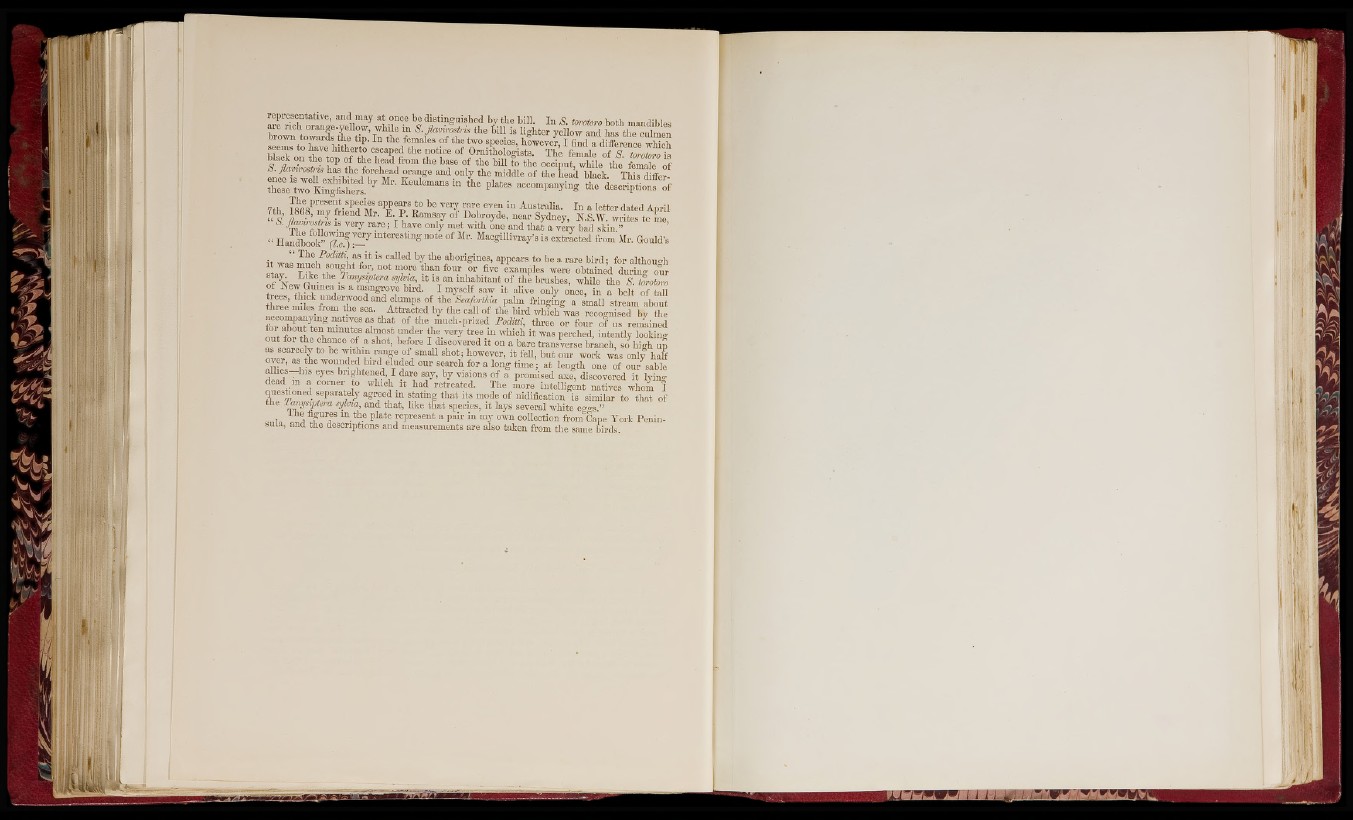
repre sentative, an d may a t once be d istin g u ish ed by the b ill
w f t o / S r i ‘Z ’T / ? / f “ ft® » ill i® l l g i - y - u brown towa rds th e tip . In tlie females o f the two species, however, I fwin da „au d nifafse rteonec ec uwlmhiecnh
■ In S . torotoro both mandibles
8 lig h te r yellow and has th e culmen
„o u p UIB lemaies oi toe species!, lhldoWwTeOv\meir*, IT fJ iirnedJ are diffe ren ce _w 1h i• c1
E N ! ! h T t / ! f ¥ h T 7 f notice o f o Ornitholo.rn ith o lo g crists.is ts . Thr.T h e female foTv,r.i.n o «-f p S .o . torotoro is
■
¥ IN ? 7 - I » ? head from th e base o f the b ill to th e occiput, while the female o f
S . J la n ro s tm has th e forehead orange and only th e middle o f the head black. This differ
7(tthh, SL«b' be, Emyr fifie/n/d“ )M?r . E . P. Ram"®s a'y’® oYf 'D7"o‘Tb r®oyftd?e ,f tn e a r Sydney, fNt S" W1®« ®w® r»i“tet®s »t oA pmroil
N. / « a ™ ™ IS v e ry r a r e ; 1 have only met ivith oNe and t h a l a v S y I ? l / N ™ ’
“ H a id b o “ ™ ! F— ®fte®«®‘®“ g “ °t® ° f M r. Maogillivray’s is ex tra c ted from Mr. Gould’s
i t T r " '® ®""®‘' "7,ft® fto r ig in e s , appears to be a rare b ird ; for a lth o u rii
Z r Z i ¥ “ “ §! ft.®’ ™°y® f t™ fe®'® o® fi™ examples were obtained d u rin g otir
oZfN Neeww GGmri nea ■ E “ ’/* *® ,“ “ » " » "™ * “»"'®»®''®»®®' '®»il® ft® -S. toreio™ IS a mangrove bird. I myself saw i t alive only once, in a b e lt o f tall
tree s, th ick underwood and clumps o f th e Seaforthia palm frin g in g a small stream abont
th re e miles from th e sea. A ttra c te d b y tbe call o f th"e b ird w b E v a s rZ o N s e T b r ? h e
aecompan:^ng nativ es as tb a t o f tb e ¿ u c h -p r iz e d Poditti, three o r fo u r ! ? ! s r e Z in e d
Nu\ fo ? 'th fe “htoc“ / ’"ft®'- f t e v e ry tree iu ivhicb i t was perched, in ten tly looking
o u t fo r th e chance o f a sh o t, before I discovered i t on a bare transverse branch, so hfoh uS
as scarcely to be w itbm range o f smaU sh o t; however, i t fell, b u t our work was o n l? h a lf
!iiiN hi/eZEft ri '®®Eft'’"'°“®**“®= "* 1®“«*» °"® “f °"® ®ft>® a lb e s—h is eyes b rig h ten ed I dare say, b y visions o f a promised axe, discovered i t lyino-
{ / r t i / e r i '®ft®¥.®* » " ? ■■eft®»*®»- TLe more in te llig en t natives w h o / I
questioned sep aiately agreed in rta tm g th a t its mode o f nidification is similar to th a t of
th e lanysiptera sylvia, and th a t, h k e th a t species, i t lays several white eo-o-g ”
s„ln ; 7 l A T® “ -N® p l" ‘® ®®P®®®®“ * » P™’ f t ■“ }• ®™ collection from°Cape York P e n in sula,
and th e descriptions and measurements a re also taken from the same birds
:r I
/ ‘i* '■
’ l l